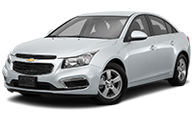Andalucia things To Do - activities, hotels, golf courses & car rental
The Andalucia hotel and activities guide offers stay over guests and cruise ship visitors information and discount reservations for hotels, villa rentals, car rentals, activities and shore excursions in Andalucia.
Plan your trip from home and save a lot versus booking via your cruise ship or travel agent. Book your resort, hotel, car rental or activity in Andalucia with the Andalucia Hotels & Travel Guide at up to 50% less then the regular published rates.
Andalusia was an important region during the Roman Empire, and was later ruled by the Visigoths, Moors, and the Catholic Monarchs. The region's history is reflected in its architecture and monuments, such as the Alhambra in Granada and the Mezquita in Cordoba. The region has a rich culture, with traditional festivals and flamenco music and dance.
Andalusia is also known for its natural beauty, including the Sierra Nevada mountain range, the Doñana National Park, and the beaches of the Costa del Sol. Visitors can also enjoy outdoor activities such as hiking, skiing, and water sports. The region is also famous for its delicious cuisine, with dishes such as gazpacho, paella, and tapas.
Andalusia is the most populous and second largest autonomous community in Spain. The official language is Spanish. The currency is Euro. The population is around 8 million. The capital of the region is Seville. The region is headed by a president and a parliament. The head of state is the King of Spain.
Andalucia Travel Information
Andalucía is one of the seventeen autonomous regions of Spain. In 2012 it had a population of 8,449,985, making it the largest Spanish autonomous region by population. The capital of Andalusia is Seville. Andalusia should not be confused with Al-Andalus which contained most of Spain and Portugal.
Andalusia is located in the south of Spain. The area is bordered to the north by Extremadura and Castile-La Mancha, to the east by Murcia, to the south by the Mediterranean Sea and Gibraltar, and to the west by Portugal and the Atlantic Ocean.
Music and dance
Andalusia is the cradle of flamenco music. The exact history is not known, but it is suspected that gypsy music was mixed with Indian, Christian, Jewish and Moorish influences.
Sport and game
The Maestranza Arena
Andalusia is also the cradle of bullfighting. Although this cultural tradition is threatened by protests from animal rights groups, it remains immensely popular in Andalusia. The bulls are specially bred for courage and fighting spirit. Famous arenas are in Seville (Maestranza arena), in Ronda and in Córdoba.
Culinary
Andalusia is also the land of sherry, an alcoholic wine. The grapes from which sherry is made are grown near Jerez de la Frontera. Two grape varieties are mainly used for sherry: the Palomino and the Pedro Ximénez. Tapas are often eaten with the sherry. These are typical Spanish appetizers that are consumed during the cocktail hour.
In the overall economy of Andalusia, fishing plays a minor role, yet it is traditionally a cultural factor in the coastal towns; specialties are shrimp and tuna.
Iberian horses
Andalusia is known among horse lovers for the breeding of horse breeds such as the Andalusian and the Lusitano, which are deeply rooted in the Berber and over the centuries have had a major influence on the breeding of many other European baroque horse breeds, such as the Lipizzaner, the Kladruber and the Frisian.
Religious festivals
One of the religiously based festivals is Feria de Nuestra Señora de la Salud in Córdoba.
Climate
The Mediterranean climate influences the weather in Andalusia. The summers are dry and the winters mild. But within Andalusia there is a lot of variety, from the extensive coasts to the snowy peaks of the Sierra Nevada. Often on the same day, for example, you can ski in the morning in the Sierra Nevada and swim in the afternoon in the nearby Mediterranean Sea. While the coastal regions usually have a pleasant climate, tempered by the sea, inland it can get extremely hot: the Seville region is notorious for that; the temperature regularly rises above forty degrees Celsius in the summer. The driest place on mainland Europe can also be found in Andalusia, namely the Cabo de Gata, where only 117 mm of rain falls per year. The Tabernas Desert in Almería is the only real desert in Europe.
The average temperature in a year is more than 16 °C. January is the coldest month, and July and August are the hottest months. These months have an average temperature of 28.5 °C.



















 English (Canada)
English (Canada) Español (Argentina)
Español (Argentina) Español (Chile)
Español (Chile) Español (Colombia)
Español (Colombia) Español (México)
Español (México) Español (Perú)
Español (Perú) Español (Venezuela)
Español (Venezuela) Français (Canada)
Français (Canada) Português (Brasil)
Português (Brasil) English
English Dansk
Dansk Deutsch (Österreich)
Deutsch (Österreich) Deutsch (Schweiz)
Deutsch (Schweiz) Deutsch
Deutsch English (UK)
English (UK) English (Ireland)
English (Ireland) Español
Español Français (Belgique)
Français (Belgique) Français (Suisse)
Français (Suisse) Français
Français Italiano (Svizzera)
Italiano (Svizzera) Italiano
Italiano Nederlands (België)
Nederlands (België) Nederlands
Nederlands Norsk
Norsk Português (Portugal)
Português (Portugal) Svenska
Svenska English (Australia)
English (Australia) English (Hong Kong)
English (Hong Kong) English (India)
English (India) English (Malaysia)
English (Malaysia) English (New Zealand)
English (New Zealand) English (Philippines)
English (Philippines) English (Singapore)
English (Singapore) 日本語
日本語 English (South Africa)
English (South Africa)